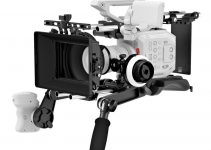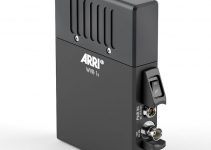Indeed, Premiere Pro CC has some of the most powerful assets and impressive editing features available out there. Just as any NLE, though, the actual editing workflow comes with its quirks and challenges. So, if you want to take the most out of the editing process, customising your shortcuts and utilising some of the essential tools the platform provides is certainly the way to go.
Mastering those tools and assets may take a while, but at the end of the day, the time and effort will be worth it all. Ahead Kris Truini from KriscoartProductions summarises the top 10 Adobe Premiere Pro CC and CS6 tools and shortcuts that will make you a faster, better, and most importantly, a less stressed out editor.
As Kris suggests, assigning the most frequently used keyboard shortcuts within the reach of your hand in the first place should significantly decrease the dead time while editing, thus making your workflow more efficient and productive. Having this tip in mind, let’s delve into the actual shortcuts and tools.
Zooming in and out of your timeline can save you a ton of time if you toggle between just two keys instead of using the mouse and scrubbing over the bottom bar instead. Considering that this is one of the most frequently used features when editing, make sure that both keys you pick will be instantly accessible to your left hand. For instance, in my daily workflow, I use G and H keys, but you can choose whatever combination that works best for you.
Ripple Delete can also enhance your editing by deleting the unnecessary bits between your clips. Kris suggests using the F key for this feature. Another way to eliminate the unwanted space between two separate clips in your timeline is by selecting the empty area and pressing Delete.
Further, the Shuttle button function can be used in situations when you have a long timeline, and you want to have a quick preview and skim through your whole scene. Tapping or clicking the Shuttle button increases the speed of playback in doubling increments, up to the maximum 32x playback speed in the direction of the button’s arrow. The suggested keyboard shortcuts by Cris are Shift + L and Shift + J.
Track Selection Tool is one more useful feature implemented in Premiere Pro CC. In essence, it selects all the clips to the right of the cursor in a sequence. To choose a clip and all clips to the right on its track, click the clip. To select a clip and all clips to its right in all tracks, Shift-click the clip. It works like a treat mainly when you have a cluttered timeline and you want to move a section backwards or forwards.
Another essential tool that every editor uses all the time is the Razor Tool. You can leave the default C shortcut to enable the feature. It’s also worth noting that the V key is the shortcut for the Selection Tool, so toggling back and forth between those two assets is extremely convenient instead of navigated to the Tool Bar with the mouse whenever you need to pick one of these.
By utilising the Rearranging clips function, you can drag a clip and place it in an empty spot or snap it to another clip. You can also insert and overwrite clips that you move around. Overwrite is the default mode and is indicated by the Overwrite icon when dragging clips. Pressing Ctrl (Windows) or Command (Mac OS) as you drop a clip performs an insert edit.
Sometimes as an editor you may also need to drag and copy the same clip (or a bunch of clips). Just select the clip, press and hold the Alt key and slide forward the selection. This method is probably the easiest way to make a copy of a clip in Premiere Pro CC.
Slicing your entire timeline can also speed up your workflow. This can be easily done with the Razor tool in conjunction with holding down the Shift key. That’s pretty useful and also can cut down on time instead of slicing the clips one by one.
Applying a Default transition through a shortcut can be another huge time-saver. Just as in the FCP-X, here in Premiere Pro CC, you also have the option to assign a default transition to a shortcut. The default key combination to access this feature is Command + D, but before you hit those make sure that you’ve already selected the given clip.
At last but no least, Kris shows how to expand any panel in Premiere Pro CC to display it in full-screen mode, and toggle back to normal view. You can do so with the current panel in focus or the panel you are hovering over with your mouse and then by pressing the Tilde key on your keyboard. Just like the above features included in the list, this function also makes editing in Premiere Pro a lot faster and a way less intimidating.
[source: KriscoartProductions]
Disclaimer: As an Amazon Associate partner and participant in B&H and Adorama Affiliate programmes, we earn a small comission from each purchase made through the affiliate links listed above at no additional cost to you.





Great article, thanks!